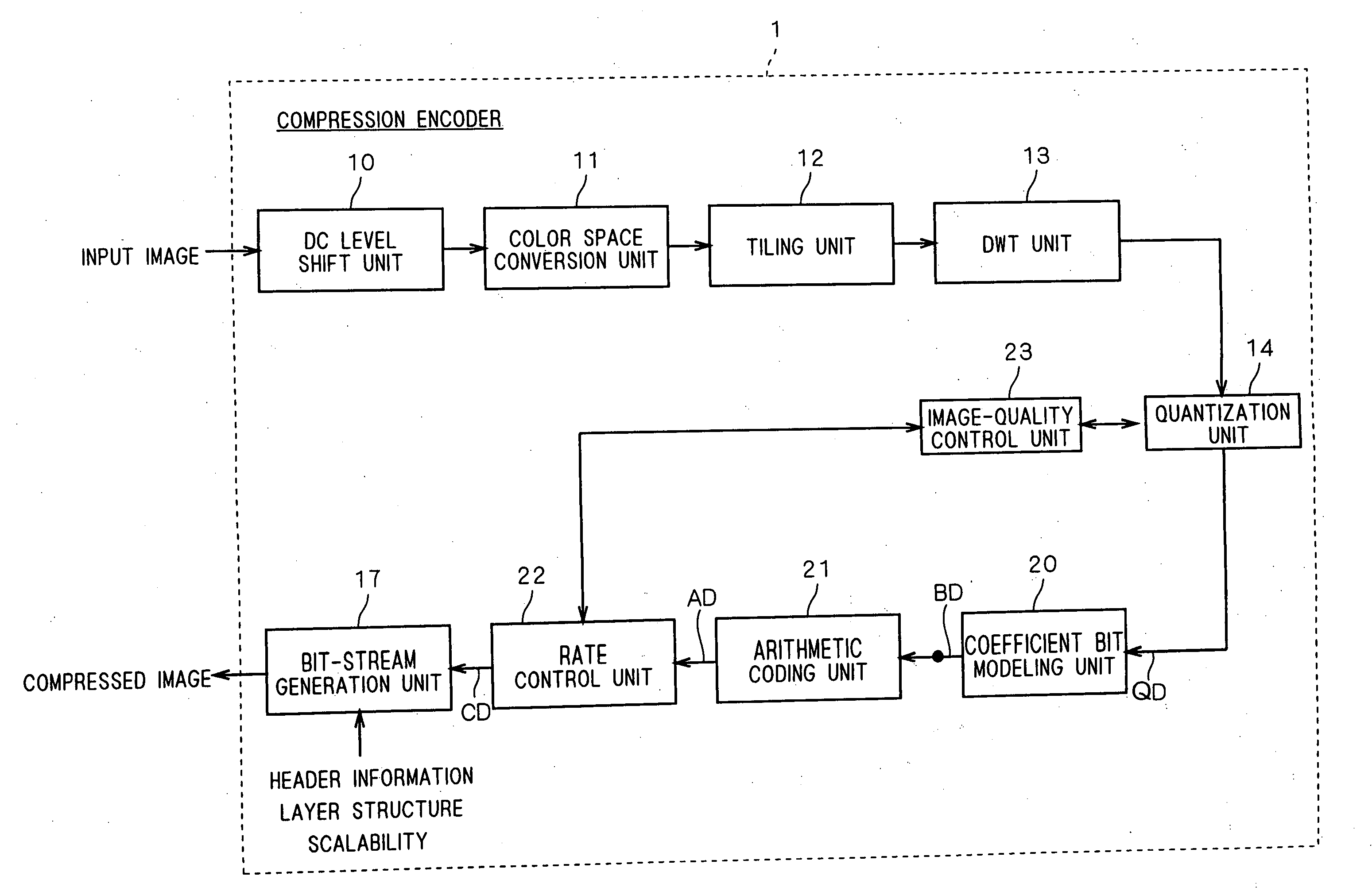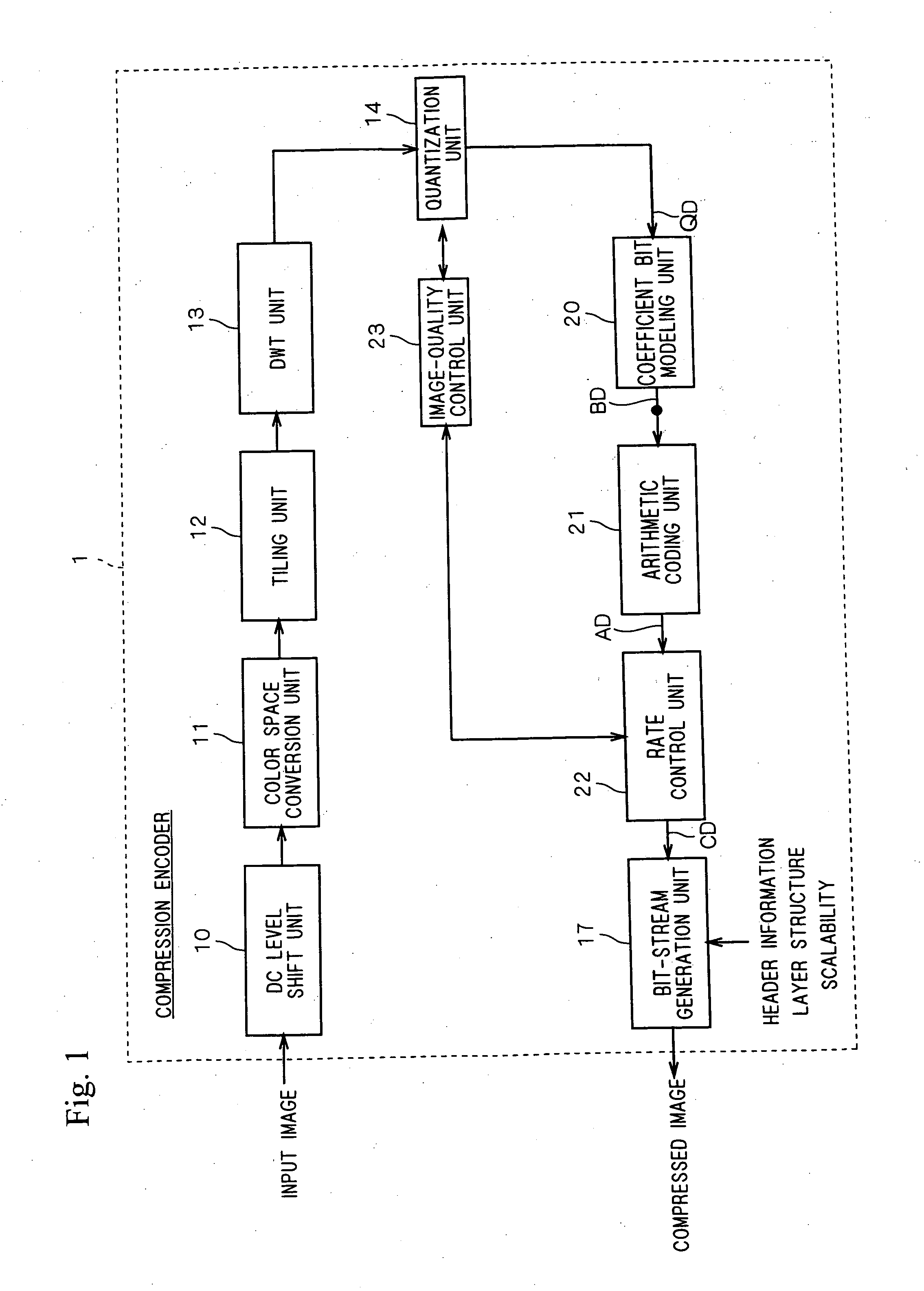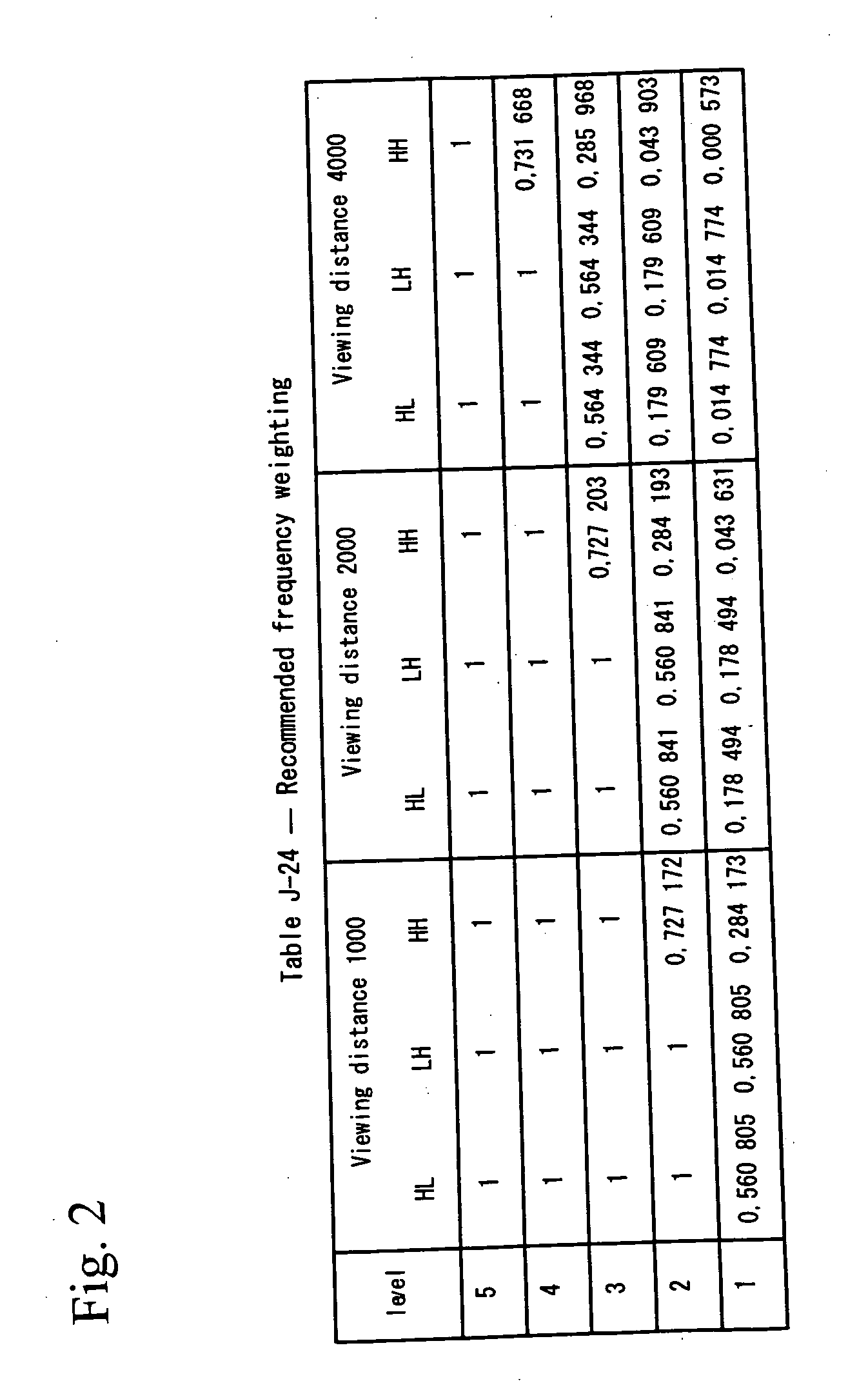Compression encoder, compression encoding method and program
- Summary
- Abstract
- Description
- Claims
- Application Information
AI Technical Summary
Benefits of technology
Problems solved by technology
Method used
Image
Examples
first preferred embodiment
Compression Encoder
[0079]FIG. 1 is a functional block diagram showing a general configuration of a compression encoder 1 according to a first preferred embodiment of the present invention. After general description of the configuration and function of this compression encoder 1, quantization and coding techniques according to this preferred embodiment will be described in detail.
[0080] The compression encoder 1 comprises a DC level shift unit 10, a color-space conversion unit 11, a tiling unit 12, a DWT unit 13, a quantization unit 14, a coefficient bit modeling unit 20, an arithmetic coding (entropy coding) unit 21, a rate control unit 22, an image-quality control unit 23 and a bit-stream generation unit 17.
[0081] All or parts of the units 10 to 14, 17 and 20 to 23 in the compression encoder 1 may consist of hardware or programs that run on a microprocessor. This program may be stored in a computer-readable recording medium.
[0082] An image signal inputted to the compression en...
second preferred embodiment
Compression Encoder
[0164]FIG. 11 is a functional block diagram showing a general configuration of a compression encoder 1 according to a second preferred embodiment of the invention. A ROI unit 15 is added to the compression encoder 1 according to the first preferred embodiment.
[0165] All or parts of the units 10 to 15, 17 and 20 to 23 in the compression encoder 1 may consist of hardware or programs that run on a microprocessor. This program may be stored in a computer-readable recording medium.
[0166] The configuration and operation of the compression encoder 1 according to this preferred embodiment is described below mainly with respect to differences from the first preferred embodiment.
[0167] The quantization unit 14 has the function of performing scalar quantization on transform coefficients inputted from the DWT unit 13 according to quantization parameters which are determined by the image-quality control unit 23. The quantization unit 14 also has the function of performing...
third preferred embodiment
[0218] In the first preferred embodiment, after quantization with the quantization step size Δb, data is truncated so that target image quality is achieved with the noise reduction effect (beautiful skin effect) based on the rate control. The quantization step size Δb for use in quantization of each subband is determined by the equation (1) and the equation (2) expressed using the norm of the synthesis filter coefficient or the equation (8) expressed using the product of the value of the “energy weighting factor” discussed in the second non-patent literature and the norm of the synthesis filter coefficient.
[0219] In contrast, the present embodiment will discuss an example in the case of adapting a different “Viewing distance” according to the value of the “energy weighting factor” in the rate control after quantization with the quantization step size Δb.
[0220] Hereinbelow, the configuration and operation of a compression encoder according to the present embodiment is described, pa...
PUM
 Login to View More
Login to View More Abstract
Description
Claims
Application Information
 Login to View More
Login to View More - R&D
- Intellectual Property
- Life Sciences
- Materials
- Tech Scout
- Unparalleled Data Quality
- Higher Quality Content
- 60% Fewer Hallucinations
Browse by: Latest US Patents, China's latest patents, Technical Efficacy Thesaurus, Application Domain, Technology Topic, Popular Technical Reports.
© 2025 PatSnap. All rights reserved.Legal|Privacy policy|Modern Slavery Act Transparency Statement|Sitemap|About US| Contact US: help@patsnap.com



